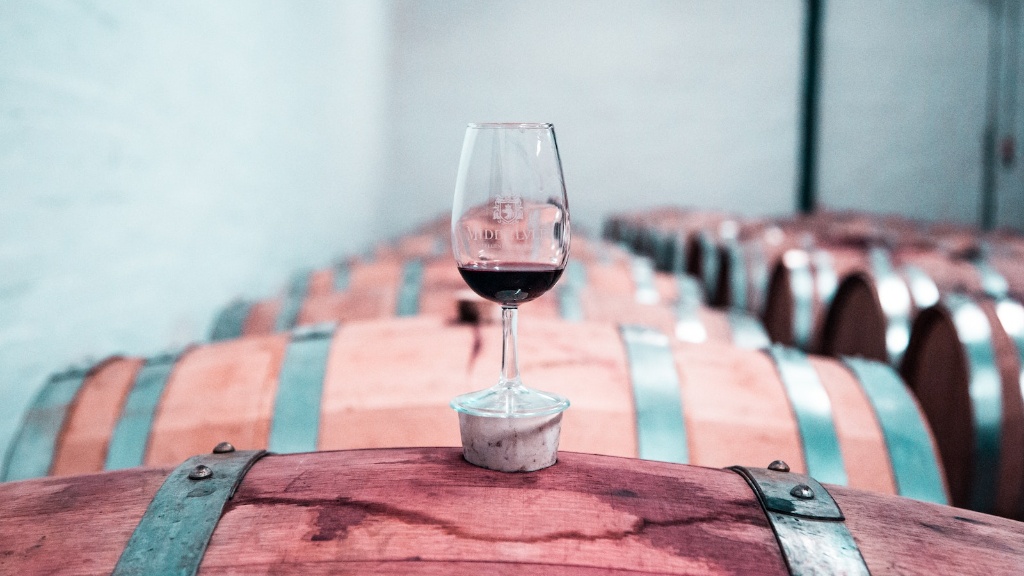From Grapes To Glass: An Inside Look At The Winemaking Process
Wine has been a beloved beverage for centuries. It is not only a symbol of celebration and socializing but also a product of great effort and skill. Winemaking is a complex process that requires hard

Wine has been a beloved beverage for centuries. It is not only a symbol of celebration and socializing but also a product of great effort and skill. Winemaking is a complex process that requires hard work, patience, and expertise.
The process of winemaking starts with the grapes. The grapes are picked and sorted by hand to ensure that only the best ones are used. The grapes\’ quality is crucial as it impacts the wine\’s flavor and aroma.
Once the grapes are sorted, they are crushed, and the juice is extracted. This step is called pressing. The juice is then left to settle, and the pulp and skins are separated from the juice. The juice is then fermented with yeast, which converts the natural sugars in the juice into alcohol.
During fermentation, the wine\’s flavor and aroma are developed. The temperature, yeast strain, and fermentation time are all critical factors that affect the wine\’s final taste. After the fermentation process is complete, the wine is transferred to oak barrels for aging.
The aging process is just as crucial as the fermentation process. The wine is aged for several months or even years, during which time it develops its complexity and character. The oak barrels also impart flavors and aromas that add to the overall quality of the wine.
Once the aging process is complete, the wine is bottled, labeled, and shipped. Before the bottles are sealed, the wine is tasted to ensure that it meets the winemaker\’s standards. A winemaker must have a keen palate to detect any faults or imbalances in the wine.
Winemaking is an art form that takes years of experience to master. There are many factors that can affect the quality of the wine, such as climate, soil, and grape variety. Each region produces wines that are unique to their area.
According to statistics, wine consumption has been on the rise globally in recent years. In 2020, the global wine market was valued at $355 billion, with red wine being the most popular type consumed. Europe is the largest wine-producing region in the world, followed by the Americas and Asia.
The Importance of Soil and Climate
The quality of the grapes is heavily influenced by the soil and climate of the region. Different grape varieties thrive in different environments, and the soil\’s composition affects the grape\’s flavor and aroma. For example, the sandy and limestone-rich soils of Champagne produce grapes that are ideal for making sparkling wine.
The climate also plays a crucial role in winemaking. A cold climate produces grapes with high acidity, while a warm climate produces grapes with more sugars. Winemakers carefully select the grape varieties that are best suited for their region\’s climate to produce the highest quality wines.
The Role of Technology in Winemaking
Modern winemaking has seen significant technological advancements in recent years. From computerized temperature controls to mechanical grape sorters, technology has made the winemaking process more efficient and reliable.
However, some winemakers argue that technology takes away from the art of winemaking. They believe that traditional methods, such as handpicking grapes and fermentation in old-fashioned oak barrels, produce wines that are more nuanced and complex.
The Business of Winemaking
The wine industry is a vast and competitive one, where businesses must keep up with changing consumer trends and tastes. Winemakers must not only produce high-quality wines but also market their products and manage their businesses effectively.
The wine industry is also heavily regulated, with strict laws and regulations governing the production, distribution, and marketing of wines. Wineries must adhere to strict labeling requirements that disclose information about the wine\’s origin, grape variety, and alcohol content.
The Future of Winemaking
As climate change and other environmental factors continue to impact the wine industry, winemakers must adapt and find new ways to produce high-quality wines sustainably. Many winemakers are turning to organic and biodynamic farming practices to minimize their impact on the environment and produce healthier grapes.
Technology is also playing a significant role in sustainability efforts, with wineries using solar power and other clean energy sources to power their operations. As consumers become more environmentally conscious, winemakers who prioritize sustainability will have a competitive advantage.
Overall, the winemaking process is a complex and intricate art form that requires skill, patience, and attention to detail. From the grapes to the bottle, each step is crucial in producing a high-quality wine that consumers will enjoy for years to come.

